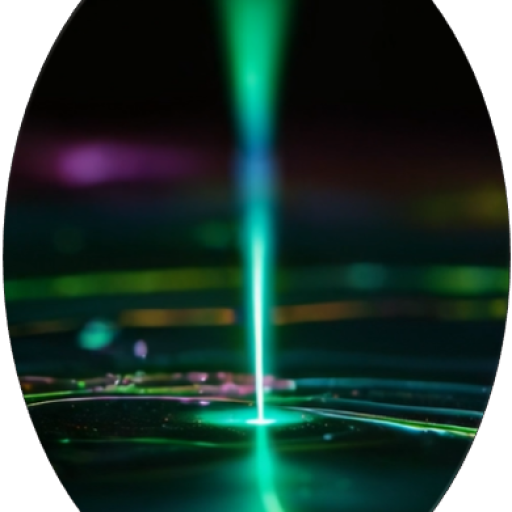Enabling the Next Generation of Nanodevices
In nanoelectronics, direct-write technologies enable the creation of customized conductive, semi-conductive, and insulating nanostructures for advanced electronic components down to the lowest nanoscale. The combination of FEBID, FIBID, FIB, and hybrid post-processing methods allows for:
- Conductive Nanowires: FEBID-deposited platinum and gold nanowires with dimensions below 20 nm for interconnects or advanced sensor architecture designs even in 3D architectures.
- Single-Electron Devices: Quantum dots and single electron field effect transistors with site-selective precision.
- Resistive Switching Devices: Tailored structures for memristors towards neuromorphic computing with 3D aspects.
A standout example is the demonstration of a FEBID-based single-electron transistor (SET) as shown in the upper image. This nanoscale device showcases the ability to achieve quantum functionality with unparalleled precision, thanks to the atomic-level control offered by FEBID. The direct-write approach ensures optimal placement and connectivity of the quantum dot within the transistor structure, enabling reliable and efficient single-electron tunneling behavior. This breakthrough highlights the potential of direct-write nanomanufacturing for quantum electronics and low-power computing applications. Another notable example is the demonstration of directly written FEBID-based memristors (lower image), enabling resistive switching devices with excellent control over dimensions and material properties. These memristors are key components for neuromorphic computing, offering energy-efficient and scalable solutions for next-generation electronics.
These methods address the demands of scalable, precise, and high-performance nanoelectronics, opening pathways for the development of ultra-fast and miniaturized nanoscale components.
Literature
A Review on Direct-Write Nanoprinting of Functional 3D Structures with Focused Electron Beams; V. Reisecker, R. Winkler, H. Plank; Adv. Funct. Mater. (2024), 34, 2407567.
Living up to its Potential – Direct-Write Nanofabrication with Focused Electron Beams; M. Huth, F. Porrati, S. Barth; J. Appl. Phys. (2021), 130, 170901.
Focused Electron Beam Induced Deposition Meets Materials Science; M. Huth, F. Porrati, O.V. Dobrovolskiy; Microelectronic Engineering (2018), 185, 9.
Focused Electron Beam Induced Deposition: A Perspective; M. Huth et al.; Beilstein J. Nanotechnol. (2012), 3, 597.
Direct-Write Single Electron Transistors by Focused Electron Beam Induced Deposition; G. Di Prima et al.; Nano Futures (2019), 3(2), 025001.
Charge Transport inside TiO2 Memristors Prepared via FEBID; M. Baranowski et al.; Nanomaterials (2022), 12(23), 4145.
